Introduction
Detailed chart of thermal insulation types and rough estimation of values provided. Always check for specific products and call out specific performance needs/minimums while designing to ensure proper insulation amount achieved. It’s imperative on site to make sure the purchased product meets the design specifications.
This is an ever changing and always growing list, especially with new products and technologies coming out consistently. Please contact us with suggestions and corrections.
- Average R-Values listed for quick calculations
- Ranges given for various products are rough estimates
- Click on product names for an external link to a product of that type.
Blanket (Batt, Rolls)
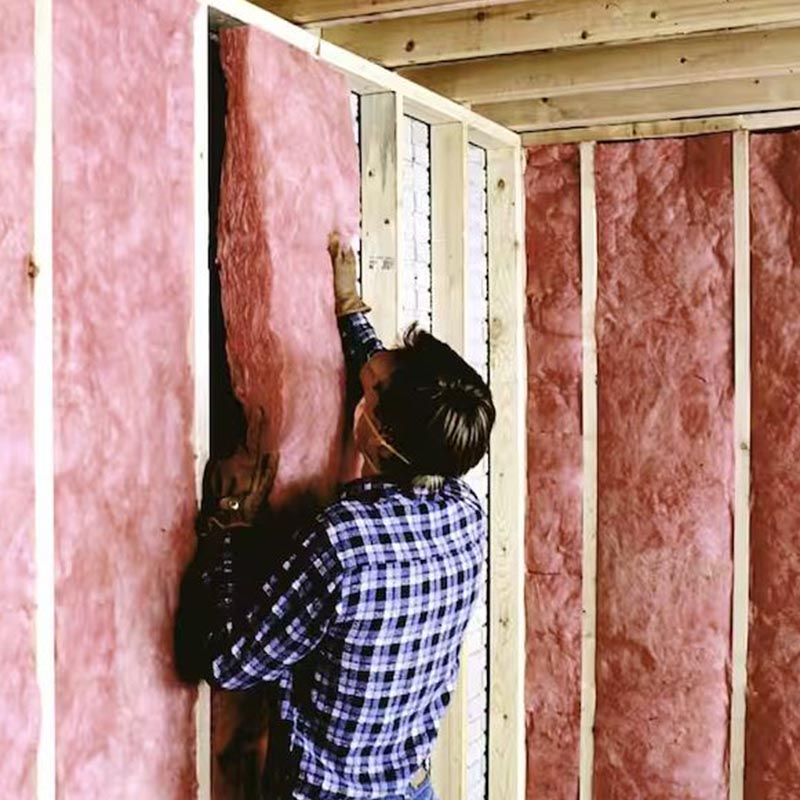
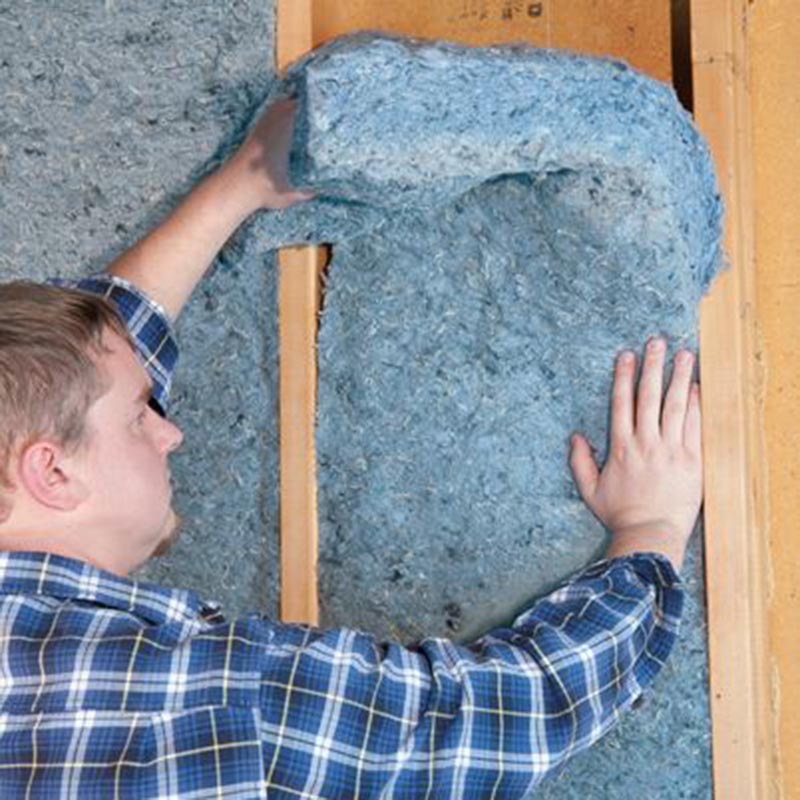
Description & Use
Blanket insulation is made of fiberglass, mineral wool, or natural fibers and comes in rolls or batts. It is usually used to insulate walls, floors, and ceilings. Also is commonly made in flexible duct wraps with typically an integrated vapor retarder facing. The airspace and voids are critical for blanket insulation performance, and you cannot overstuff for better performance.
Types
Fiberglass | 3.4 (2.9 to 3.8)
At least 30% post consumer recycled glass. You can buy in higher density or lower (more typical) R-values. Typically sold in exact width sizes for stud spacing and depths to fit in 2×4 or 2×6 wall construction. Comes in faced or unfaced versions. The faced versions have a piece of kraft paper or foil on them which will act as a vapor retarder. The vapor barrier can be broken easily with a couple cuts from a utility knife.
Fiberglass batt insulation is one of the most commonly used insulation types in the construction industry. Although the cotton and plastic fiber insulations can provide better R-Values, there are fireproofing, and cost considerations which make fiberglass the preferred insulator.
Cotton | 3.6 (3.0 to 4.3)
Pre-consumer or post-consumer recycled cotton denim scrap material with a small amount of polyester for binding/stability. These are a great sustainable product as they can be entirely recyclable. Cotton insulation is typically 100% biodegradable, reducing the impact on landfills by not just recycling fashion waste, but also preventing it from getting there after use. The cotton batts have no fire retardant properties, are great soundproofing materials, and are not waterproof. Typically has a bluish tint due to the denim.
Plastic Fiber | 4.0 (3.8 to 4.3)
Made from thermally bonded polyester fiber with a high percentage of recycled fibers (50%+) such as from PET bottles or soft-drink bottles. Polyester insulation is a good choice for homes where asthma or other severe dust allergies are a concern because it contains no breathable particles. Also has good soundproofing qualities.
Rigid Fiber (Fiber Board, Semi-Rigid)
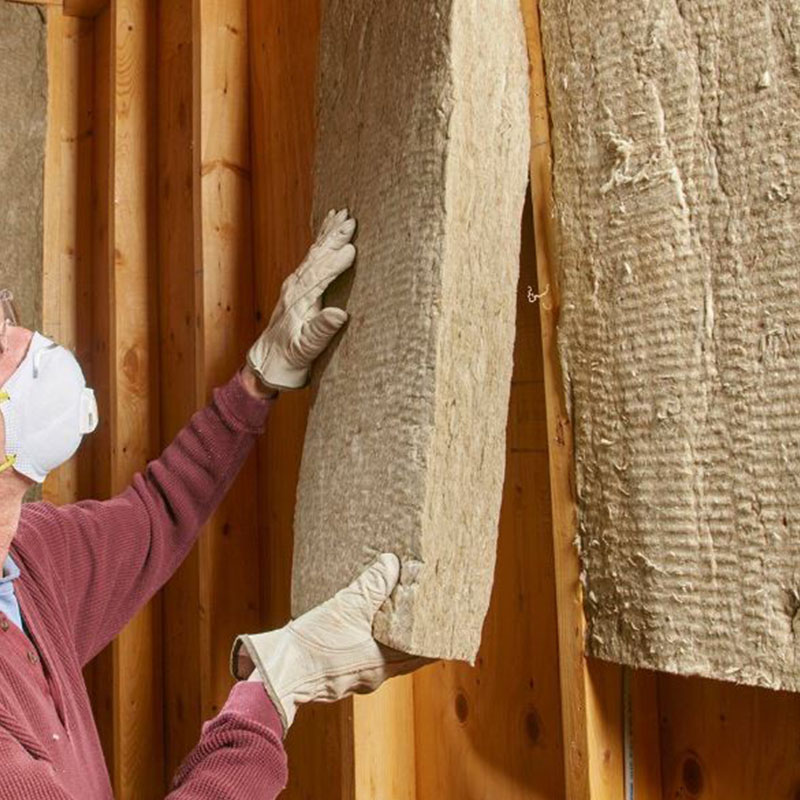
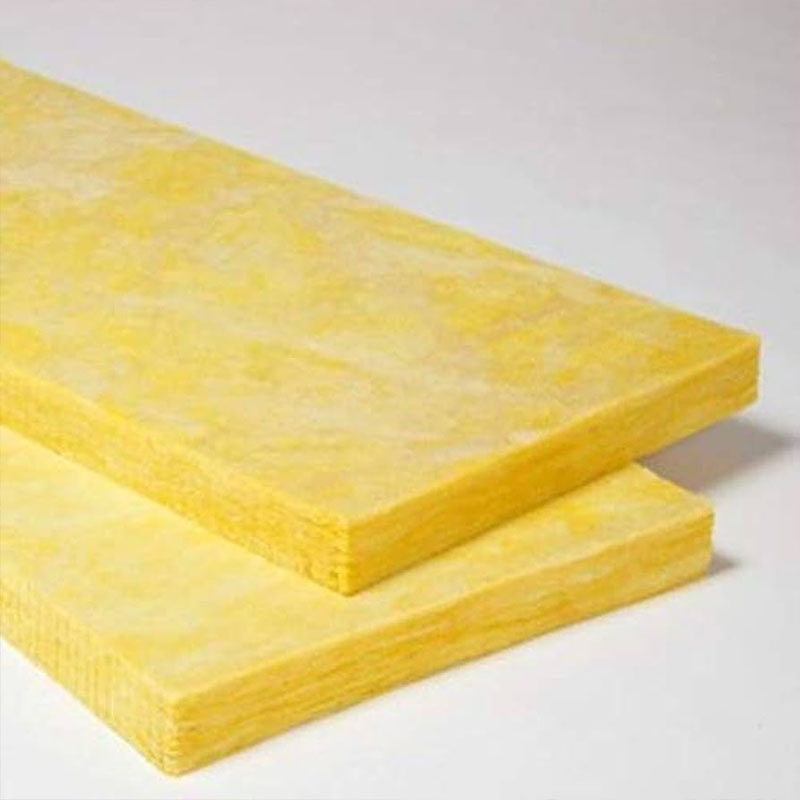
Description & Use
Rigid fiber insulation is made of fiberglass or mineral wool and is available in boards or batts. It is commonly used in walls and ceilings. It is known for its soundproofing and fire resistant qualities (more so than thermal).
When researching you will see it advertised on acoustical sites and coming in 1-2” thicknesses. You are also able to find some products colored in case they are meant to be left exposed like in sound sensitive spaces.
It is sort of an in between product between blanket and rigid foam board, and many people wouldn’t consider rigid fiber to be a ‘separate category’. However, it’s not as flexible as batt/blanket insulation (it will snap if bent past a degree of tolerance), but is more flexible and compressible than rigid foam boards (it has some tolerance to bend/squeeze).
Types
Mineral Wool | 4.1 (4.0 to 4.3)
Holds its structure fairly well and can be semi-stuffed into cavities. This gives it the ability to be sandwiched between studs easier than foam board, but has more structure to it than fiberglass batt. Mineral wool has great sound proofing and fire retardant qualities.
- Compressive strength around 5 psi to 10 psi.
Fiberglass | 4.1 (4.0 to 4.3)
Generally used for its soundproofing qualities.
Rigid Foam Board
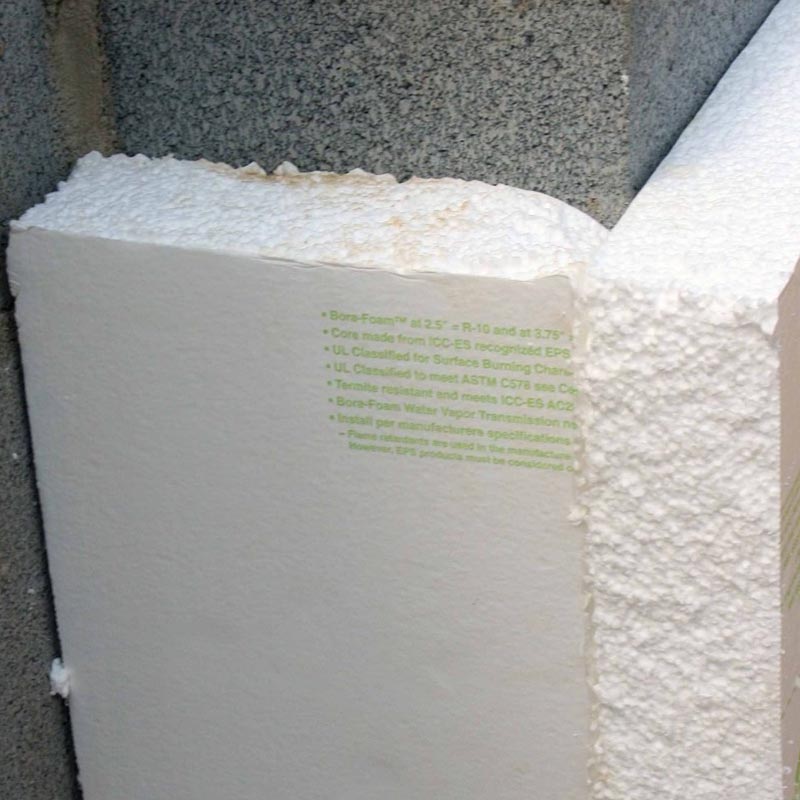
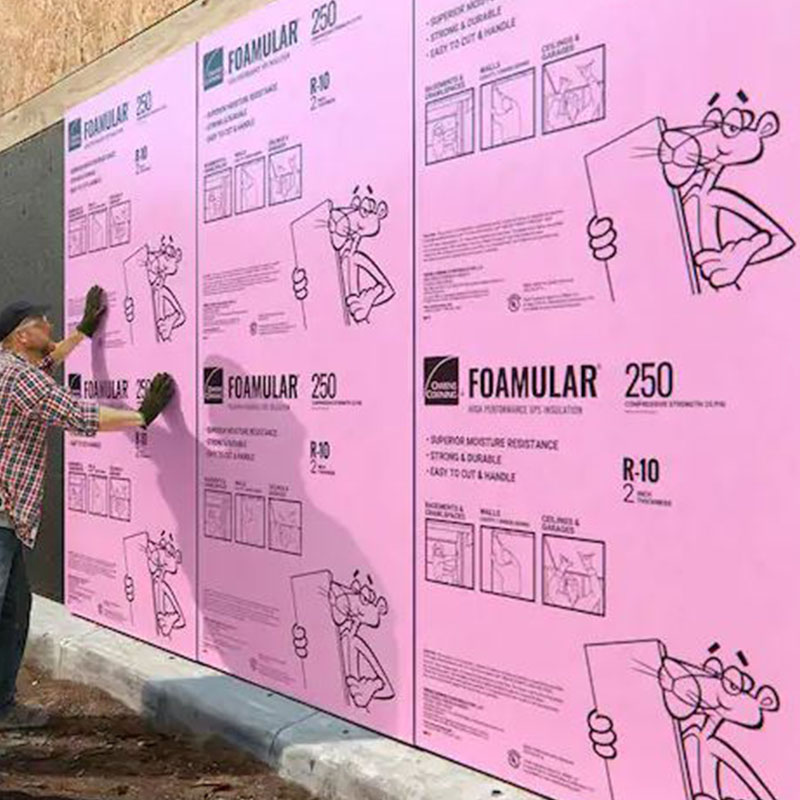
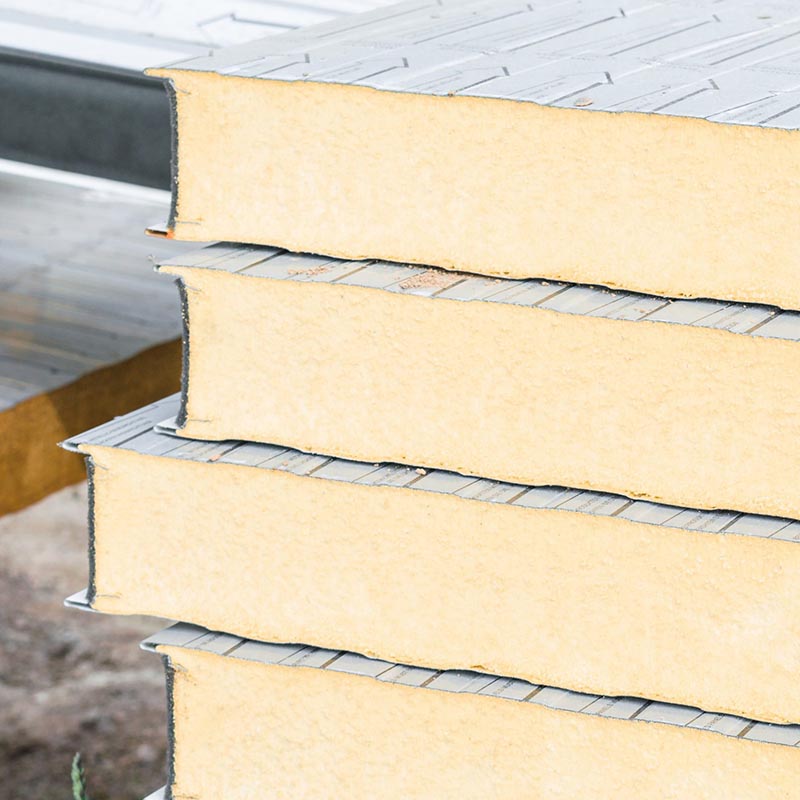
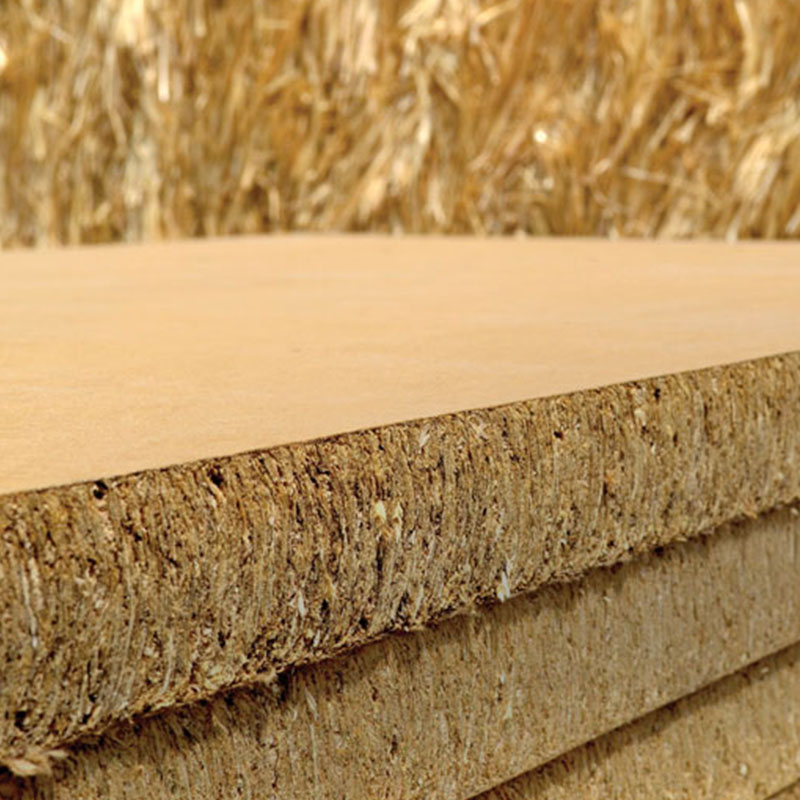
Rigid/Foam board insulation is made of polystyrene or polyurethane and is available in various thicknesses. It is commonly used to insulate walls, roofs, and foundation walls. It has great compressive strength and generally can be walked on without much deformation, and is easily snap cut with a utility knife.
Another less widespread use is to build up landforms underneath green roofs. This allows land to be sculptured without the immense amount of weight added if the entire form was made from soil or rocks.
Rigid boards used to be made with organics such as cork, wood, cane, etc. However, over the years this has been vastly replaced by using inorganic material which performs better thermally.
Types
Polystyrene (EPS & XPS) | 5.0 (3.8 to 6.5)
Expanded Polystyrene (EPS): Closed-cell manufactured by mixing unexpanded polystyrene beads containing liquid pentane and a blowing agent. The mixture is heated to expand the beads, which are then injected into a mold to form a foam block.
- The spaces in EPS can absorb water, so a vapor barrier is needed if moisture is a concern
- EPS is the white foam from packaging that can flake off in tiny pieces
Extruded Polystyrene (XPS): Closed-cell material manufactured by mixing polystyrene pellets with various chemicals and then introducing a blowing agent.
- XPS has a higher insulating value than EPS and also a higher compressive strength.
- XPS has a higher resistance to water, and is the only insulation recommended for protected membrane roof systems and below-grade insulation.
- Usually blue or pink in color, with a smooth plastic surface. XPS panels typically aren’t faced with other material.
- XPS is the foam used for interlocking foam insulation blocks. These foam blocks go together like ‘Legos®’, have a void in the middle allowing the block to act as formwork for the concrete. They then stay in place after the concrete has cured, providing great thermal benefits to the concrete.
- XPS melts when exposed to fire (drips)
Polyisocyanurate (‘PolyIso’) | 6.2 (6.0 to 6.5)
Has a high density of R-value per inch (the highest of non-sprayed insulation products used), and typically also has good compressive strength (20 psi to 110 psi). Used as rigid boards above grade applications in roof and wall assemblies.
- Closed Cell, so it cannot absorb moisture or air.
- Comes in faced or unfaced (permeable) options.
- Has great fire resistance, it will ‘char’ rather than melt when exposed to flames.
Polyurethane | 4.0 (3.7 to 4.5)
A low-density closed cell foam that is often used for insulation panels, boat fill, helmet liners, and composites. It is a popular choice for insulation because of its high thermal resistance properties. It is generally more expensive than the other board forms and rarely used.
Compressed Straw | 1.5 (0.9 to 2.4)
Used as infill in structural insulated panels (SIPs). These panels insulate extremely well against sound and are okay thermal performers. Counter intuitive, they can also achieve 1 hour fire ratings. This is more of a specialty product and depending on what company you go with you will find different qualities. Some create straw walls that are only non-load bearing, while others will frame with studs and they can hold weight. These walls typically are great at achieving air-tightness used for programs such as Passive Haus.
- R-Value can increase depending on how tight the straw is packed.
- Essentially think of this like straw bales that are compressed tightly, similar to OSB or Plywood.
- Faced with paper or another material. Some choose to tape the ends as well, depending on application/use.
Loose-Fill
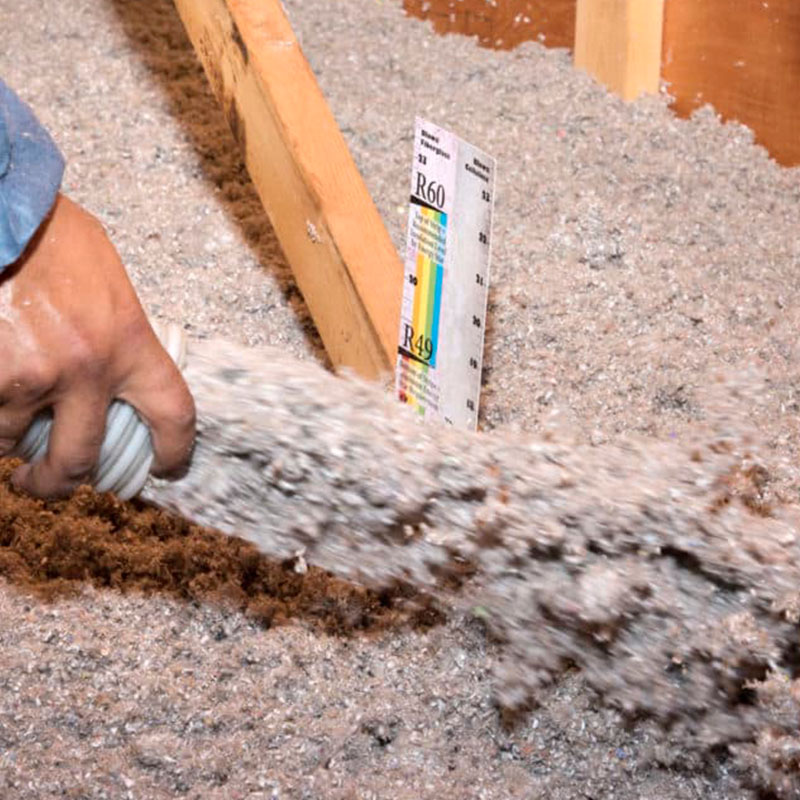
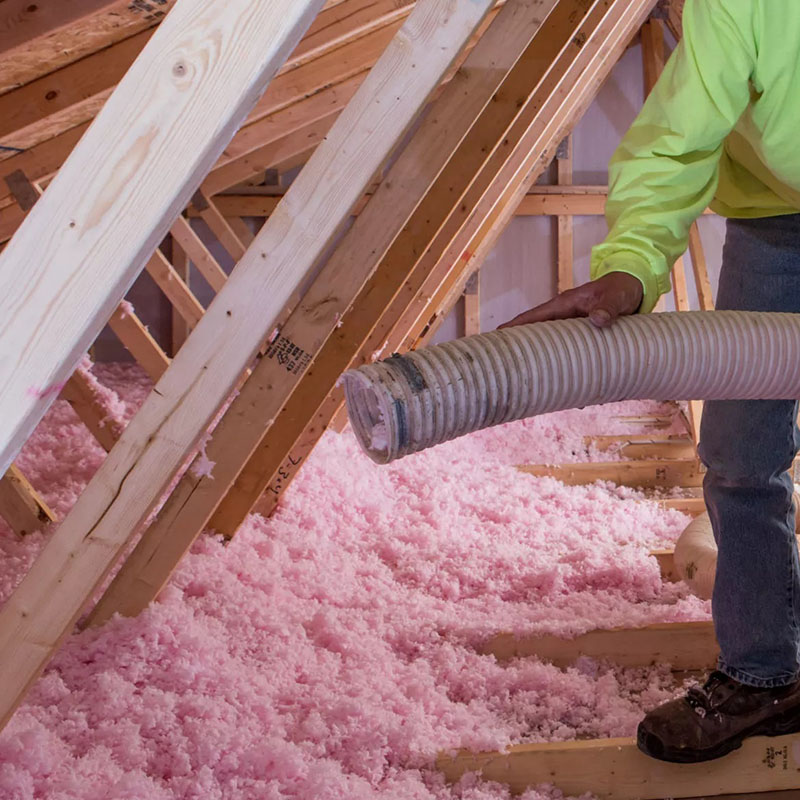
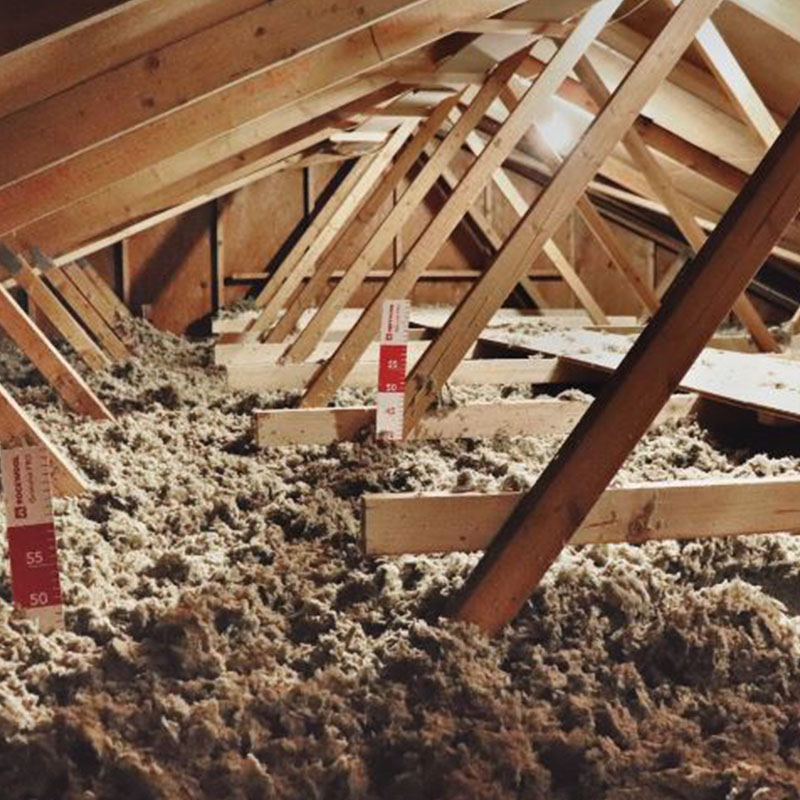
Made of cellulose, fiberglass, or mineral wool and is blown into cavities using specialized equipment. It is usually used to insulate attics, walls, and floors. Used in places where it is difficult to install other types of insulation, because it can fill around pipes and other unique shapes. Produced as shreds, granules, or nodules and can be poured or blown into spaces to be insulated.
Loose-fill is similar to spray foam and will fill in spaces. The products are typically used for horizontal applications, and will over time slowly compress and settle. As it compresses, it slowly will lose some of its insulating power; and therefore the system should be overdesigned (use R-25 if R-20 is required, etc). If used vertically, this settling will be more pronounced and a larger issue as it will leave a gap at the top of the wall assembly.
- All loose fill insulations require the installation of a vapor retarder/barrier.
- Has a high recycled content and low embodied energy.
- Extremely easy to install and no special equipment is needed if poured into spaces.
- BIBS: Fibers from recycled cardboard and newspaper with a fire retardant
Spray-in variations are available where the product is mixed with water and adhesives to allow it to ‘stick’ to surfaces such as the interior side of roof sheathing in an attic.
Types
Cellulose (Spray on) | 3.5 (3.1 to 3.8)
Made from 50-100% post consumer recycled paper combined with a fire-retardant additive. (EPA recommends at least 75%). Low embodied energy. Spray in cellulose will ‘stick’ to walls and can be blown in and shaped to fill joist spaces and similar. One common use of cellulose insulation is to get into tough spaces without needing to expose it completely (ripping off wallboard). For example on renovations, you can cut a hole in the drywall at the top of a ceiling ridge, and spray from the top letting the cellulose travel down the joist space filling it in.
- Cellulose settles up to 20%
- Cellulose (Spray in)
- Similar to spray on cellulose, except the cellulose in this application is wet (adhesive) and will adhere to wall cavities. Application is very similar to spray foam except it will not expand. All spray-in insulation must be allowed to dry out thoroughly before enclosing the cavity.
- Typically used in wall applications for sound proofing qualities.
Fiberglass | 2.5 (2.2 to 2.9)
As other blown in materials, it’s useful for attics where it can be difficult to get into hard to reach areas and around objects such as vents and structure. It will also settle over time reducing its efficacy slightly, so the system should be oversized.
- Settles only about 2-4%
Mineral Wool / Rockwool | 3.3 (3.0 to 3.5)
- Settles only about 2-4%
- Clumpier than cellulose
Others
Less used, these aren’t as frequent to encounter or need to implement
- Cotton
- Perlite
- Made from volcanic rock expanded by heat. Expanded form of naturally occuring siliceous volcanic rock.
- Aggregate in lightweight concrete, lightweight plaster, and a component in acoustic ceiling tiles.
- Vermiculite
- Made from mica expanded by heat. Also can be a part of some spray-applied fireproofing products.
- Good insulating material, but it may contain asbestos which is dangerous and should be avoided.
Spray Foam (Closed & Open Cell)
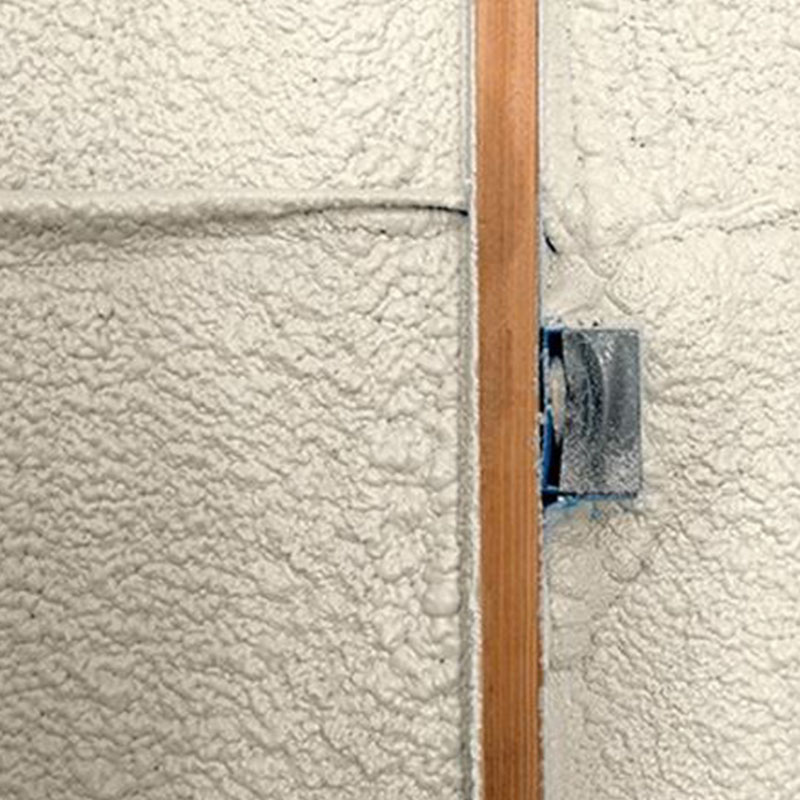
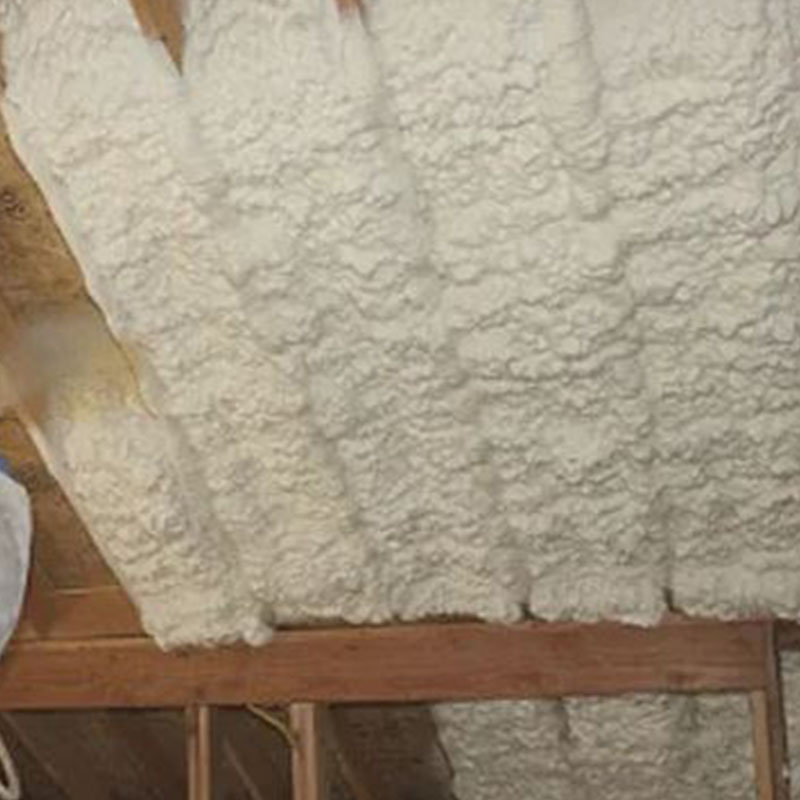
One of the more popular insulation types in recent years is open and closed cell spray-in insulation. This varies slightly from loose-fill as it is chemically engineered to ‘stick’ to surfaces and expand. Typically, chemicals are kept separate and then mixed at the nozzle to produce a reaction.
These products are specialized and almost always guarantee that the insulation will get around pipes, in crevices, and generally perform much better than placed insulation.
There are several different materials used in spray foam insulation (polyurethane, icynene, cementitious foam, etc). This technology is constantly changing and improving. The main way to decide spray foam is whether it is closed or open.
- International Building Code (IBC 2603.4) and the International Residential Code (IRC R316.4), requires that all foam plastic insulation be separated from the interior of the building by an approved 15-minute thermal barrier, such as ½-inch gypsum wall board or equivalent material. Therefore you cannot leave spray foam exposed to an interior space.
Types
Closed Cell | 6.0 (5.0 to 7.0)
Closed cell insulation is a higher density and quality closed cell insulation will act as an air and vapor barrier. Commonly used in roof insulation, it does not absorb water and will only expand about 1”. Due to its expansion and barrier properties, it is almost specified when designing an air-tight building.
Open Cell | 3.5 (3.0 to 4.0)
Softer and more flexible than closed cell insulation, it is applied in the same general manner but due to its density and engineering, is not as good of a thermal resistance. Typically expands approximately 3” or more, and generally needs to be cut back after its hardened/expansion. Since it expands more, is a great product for hard to reach ‘nooks’, and is an excellent sound proofing material.
- Much more affordable than closed cell insulation.
Radiant Barriers & Reflective Insulation (Foil)
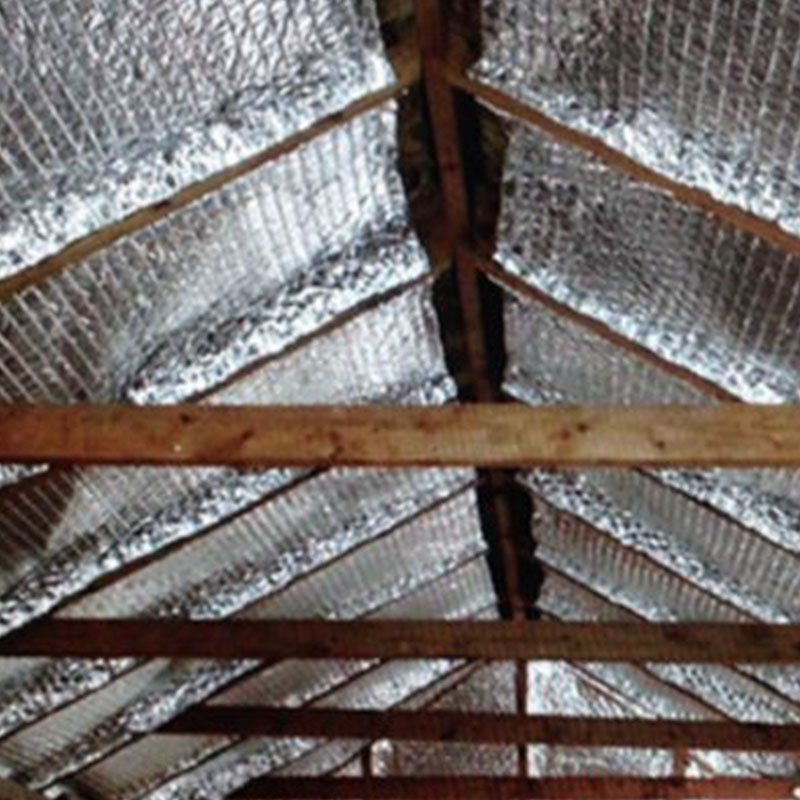
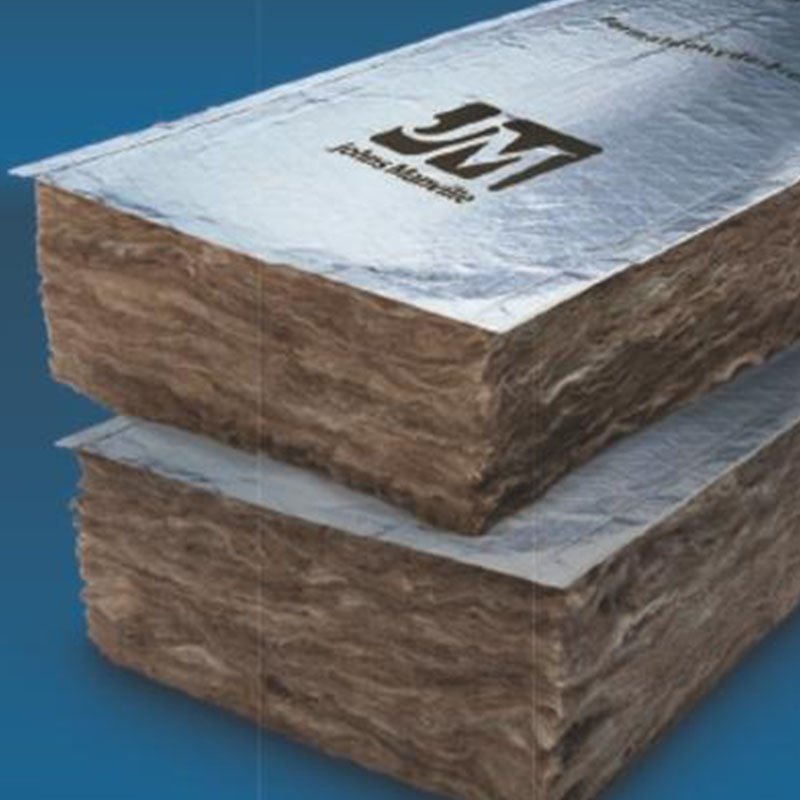
Radiant barrier insulation is made of aluminum foil and is usually installed in attics.
- During winter, this reflects heat back into the building
- During summer, this reflects heat away from the building.
Not used for its R-Value, but rather its radiant barrier properties. Some products listed before can come foil backed/faced which will have the same properties listed here.
Radiant Barrier: Single sheet of highly reflective material, usually aluminum, that faces an open air space. It reduces the passage of thermal radiation, most often by blocking the summer heat gain. Sometimes it is used to help retain heat in the winter.
Reflective Insulation: When a radiant barrier is combined with a backing of insulation.
Reflectance: Measures how much the radiant heat is reflected by the material. A number between zero and one. Sometimes given as a percentage.
- .8 = 80% = 80% of the radiant energy hitting the surface is reflected.
Emissivity: Measure of how much energy is emitted. All materials give off, (emit) energy by thermal radiation as a result of their temperature. Emissivity is also measured on a scale of zero to one.


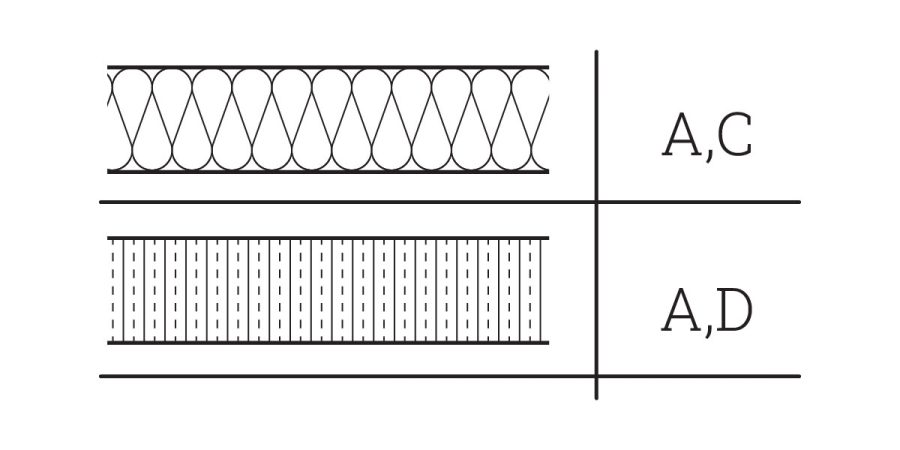
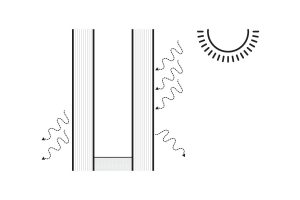

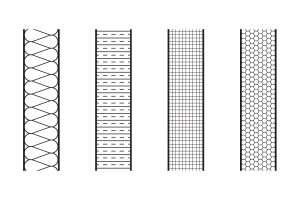
Leave a Reply
You must be logged in to post a comment.